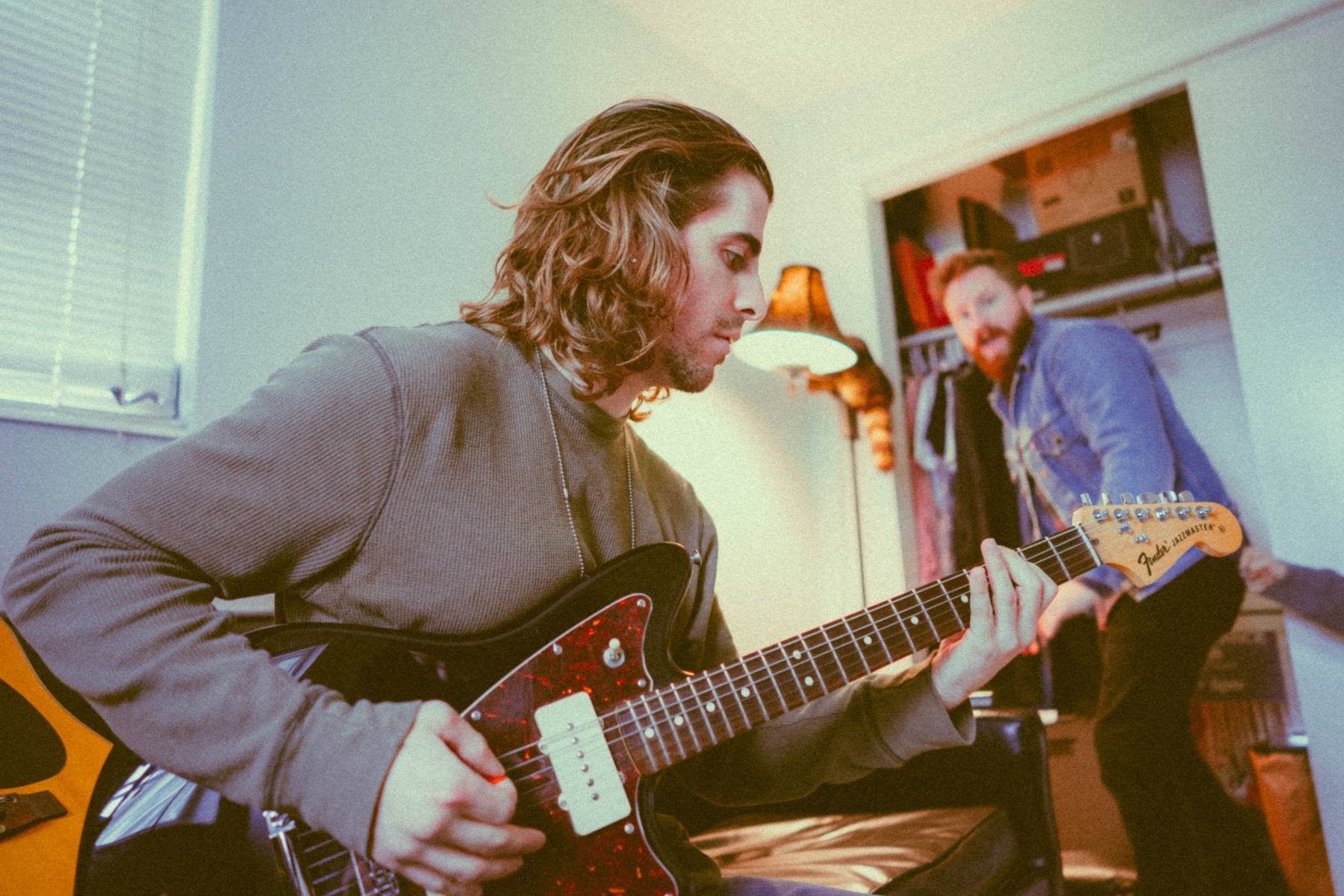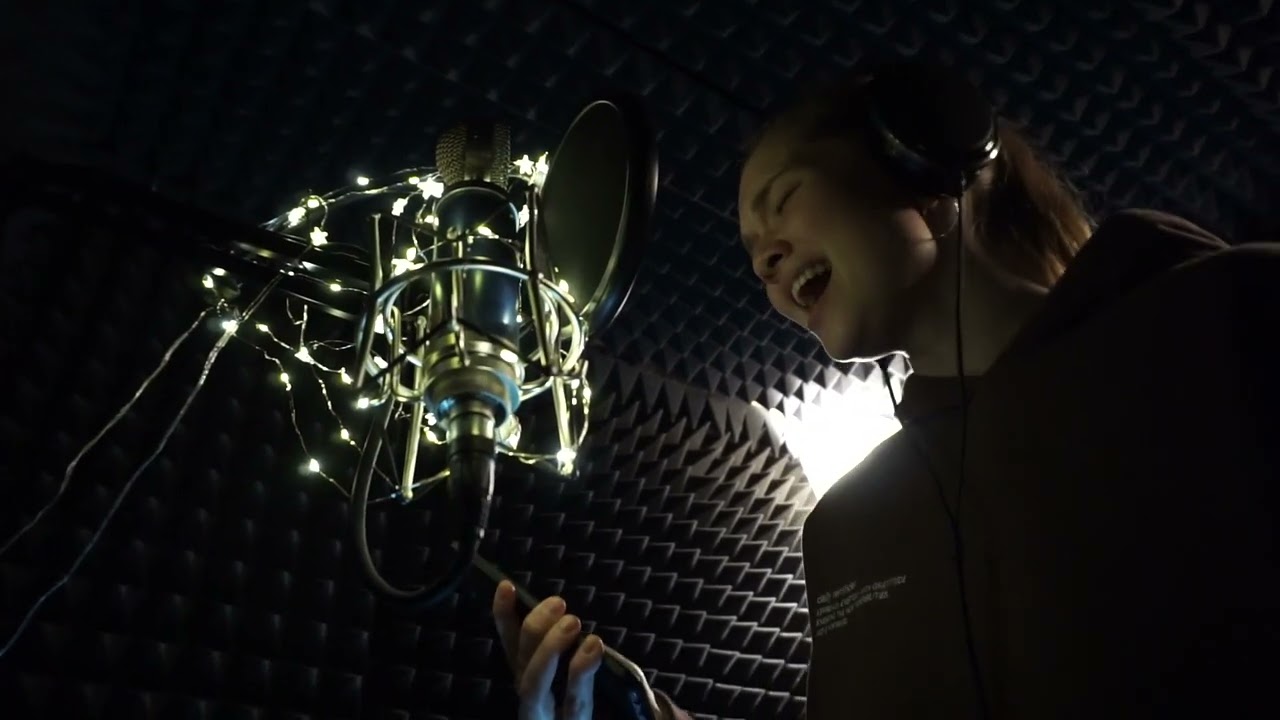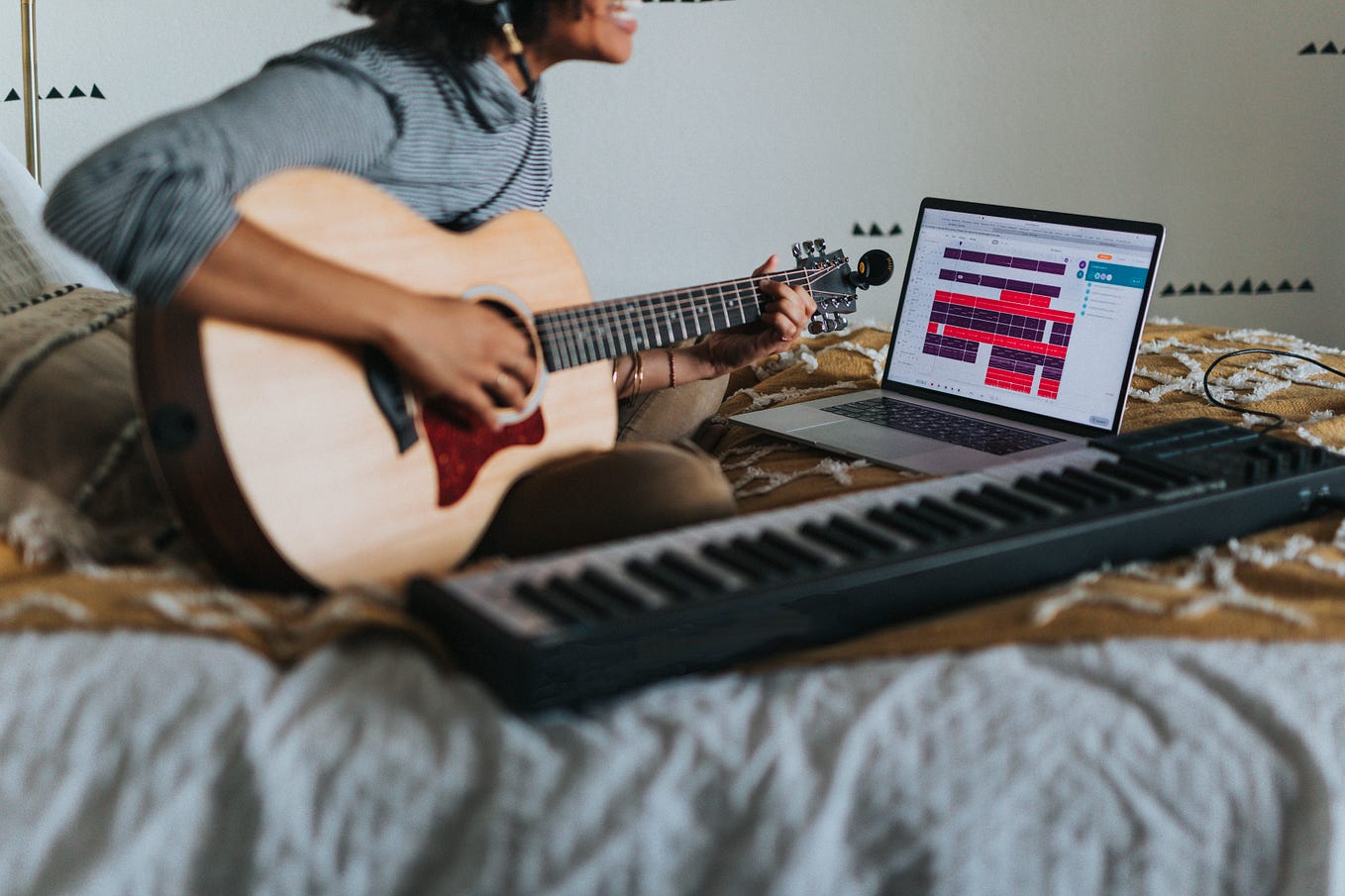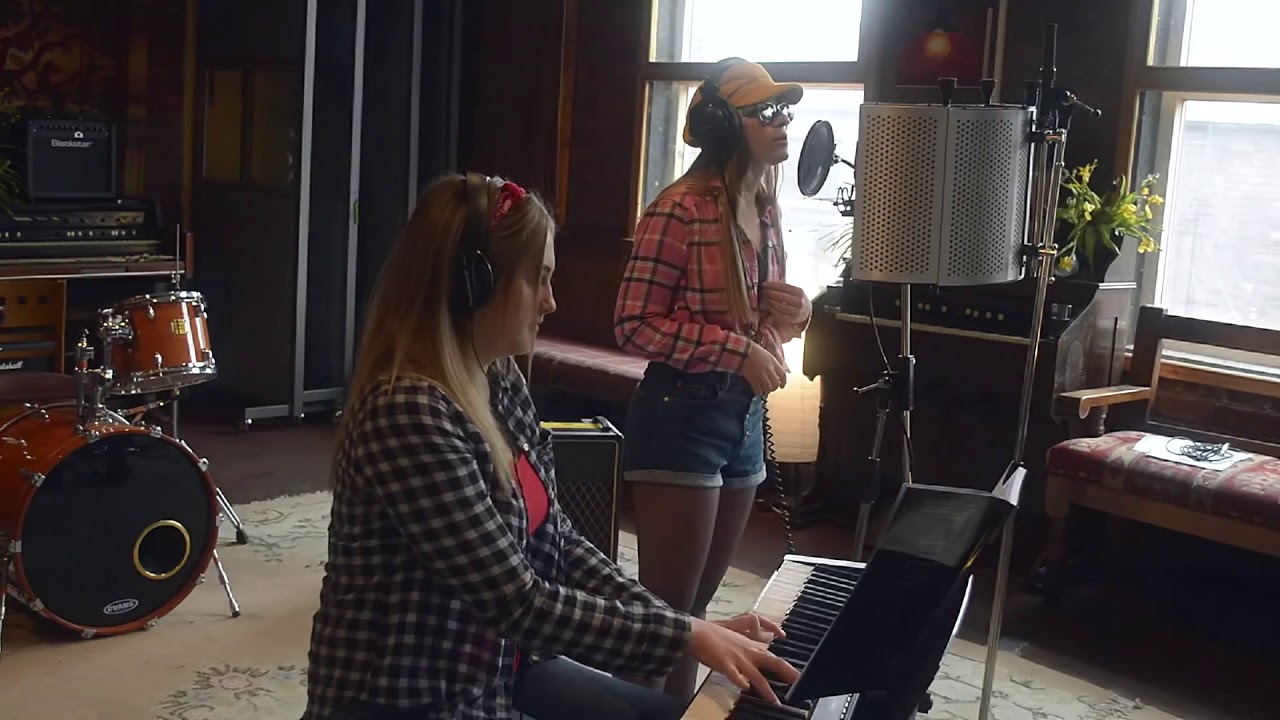Home>Production & Technology>Cover Song>How Do You Go About A Cover Song


Cover Song
How Do You Go About A Cover Song
Modified: January 22, 2024
Learn the steps on how to go about a cover song, from selecting the right song to ensuring proper licensing. Find tips and advice for your cover song journey.
(Many of the links in this article redirect to a specific reviewed product. Your purchase of these products through affiliate links helps to generate commission for AudioLover.com, at no extra cost. Learn more)
Table of Contents
Introduction
Cover songs have become a popular way for musicians to showcase their talent and pay homage to their favorite artists. Whether it’s adding a unique twist to a classic tune or putting a fresh spin on a current hit, cover songs allow musicians to put their own creative stamp on well-known tracks. But how do you go about choosing, recording, and releasing a cover song?
In this article, we will explore the step-by-step process of creating a cover song, with a focus on selecting the right song, understanding copyright laws, obtaining necessary permissions, reinterpreting the song, recording, mixing, and mastering the cover, promoting its release, and engaging with feedback and reviews.
While it may seem like a daunting task, creating a cover song can be a rewarding and fulfilling experience. Not only does it allow artists to showcase their musical abilities, but it also gives them the opportunity to connect with a wider audience and gain recognition for their talent.
Whether you’re a seasoned musician looking to expand your repertoire or an aspiring artist looking to make your mark in the industry, learning the ins and outs of creating a cover song is essential. So, without further ado, let’s dive into the exciting world of cover songs and discover how you can make your own unique mark on popular music!
Selecting the Right Song
Choosing the right song for your cover is crucial to the success of your rendition. It’s important to select a song that aligns with your musical style and showcases your strengths as an artist. Here are some tips to help you choose the perfect song:
- Personal Connection: Start by considering songs that have a personal meaning to you. Whether it’s a song that resonates with your emotions or reflects a significant experience in your life, a personal connection will add authenticity and passion to your cover.
- Genre and Style: Consider the genre and style of music that you excel in. Select a song that fits within your niche and allows you to demonstrate your unique talent and vocal abilities. However, don’t be afraid to experiment and put your own spin on a song from a different genre!
- Popularity and Relevance: Take into account the popularity and relevance of the song. Choosing a well-known track can help attract a larger audience, as people are more likely to search for familiar songs. However, don’t solely rely on this factor as it’s also important to showcase your individuality.
- Feasibility: Consider the technical aspects of the song, such as its vocal range, instrumentation, and complexity. Make sure to choose a song that you can realistically reproduce and perform well. Remember, it’s better to choose a song that suits your abilities rather than attempting something that is beyond your current skill level.
- Uniqueness: Look for opportunities to add a unique touch to the song. Whether it’s rearranging the instrumentation, altering the tempo, or adding your own harmonies, finding ways to make the cover your own will help it stand out from other versions.
Once you have a shortlist of potential songs, give each one a trial run. Experiment with different arrangements and vocal styles to see which songs resonate with you the most. Ultimately, the right song will be one that allows you to express your talent, connect with your audience, and leave a lasting impression.
Understanding Copyright Laws
Before diving into the process of creating a cover song, it’s essential to have a solid understanding of copyright laws. Copyright protects the original works of creators, granting them exclusive rights to reproduce, distribute, and perform their creations. When it comes to covering someone else’s song, you need to ensure that you comply with copyright regulations. Here are key points to consider:
- Public Performance: Whenever you perform a cover song in public, whether it’s in a live setting or through a recorded medium, you are legally required to obtain a license for the original composition. This applies even if you’re not charging admission or making money from the performance.
- Mechanical License: If you plan on recording and distributing your cover song, you will need to obtain a mechanical license. This license gives you the right to reproduce and distribute the song in a recorded format, such as CDs, digital downloads, or streaming platforms. Mechanical licenses can be obtained through music licensing agencies or directly from the copyright holders.
- Compulsory Licenses: In certain countries, including the United States, there is a provision for compulsory licenses. This means that as long as you meet the necessary requirements, you have the right to record and distribute a cover of a song without seeking direct permission from the copyright holder. However, you will still need to pay royalty fees to the original songwriter.
- Derivative Works: A cover song is considered a derivative work since it is based on an existing composition. This means that while you have the right to create your own version of the song, you cannot claim ownership over the original composition. The copyright for the underlying composition still belongs to the original songwriter.
- Sampling and Medleys: If your cover song incorporates samples from the original recording or includes elements from multiple songs in a medley, additional permissions or licenses may be required. Sampling and creating medleys can involve complexities in copyright law, so it’s advisable to seek legal advice or consult music licensing agencies for guidance.
It’s crucial to research and understand your rights and obligations when it comes to copyright laws. Ignorance is not a valid defense, and failing to comply with copyright regulations can lead to legal consequences. By ensuring you follow the appropriate procedures and obtain the necessary licenses, you can cover songs confidently and legally.
Obtaining Necessary Permissions
Once you have selected the song you want to cover and have a clear understanding of the copyright laws surrounding cover songs, the next step is to obtain the necessary permissions from the copyright holders. Here’s how you can go about obtaining these permissions:
- Identify the Copyright Holder: Determine who holds the rights to the song you want to cover. This is typically the original songwriter or the music publisher. You can search for this information through online databases, copyright registries, or by contacting performing rights organizations (PROs) in your country.
- Contact the Copyright Holder: Reach out to the copyright holder to request permission to cover their song. This can be done through an email or physical mail. Be sure to clearly state your intention to record and distribute a cover version and provide details such as the title of the song, the name of the original artist, and your intended usage (live performance, recording, etc.).
- Specify your Intended Usage: Clearly explain how you plan to use the cover song. If you’re only planning to perform the cover live, you may only need a performance license. However, if you intend to record and distribute the cover, you will need both performance and mechanical licenses.
- Discuss Licensing and Royalty Fees: In many cases, you will need to negotiate licensing and royalty fees with the copyright holder. This varies depending on factors such as the popularity of the song, your intended usage, and the negotiation skills of both parties. It’s important to have a clear understanding of the financial arrangements before proceeding.
- Document the Agreement: Once you have obtained permission and have agreed upon licensing terms, it’s crucial to have a written agreement in place. This agreement should outline the details of the permission granted, the scope of usage, and any financial obligations. It is recommended to consult with a lawyer or seek assistance from a music licensing agency to ensure that the agreement is legally sound.
- Register your Cover Song: After you have obtained the necessary permissions and recorded your cover song, consider registering it with your local copyright office or a PRO. This will help protect your own rights as the artist, as well as ensure that proper credit and royalties are attributed to the original songwriter.
Obtaining the necessary permissions may take time and effort, but it is a crucial step in ensuring that you are legally compliant and respectful of the original artist’s work. By obtaining permissions, you can confidently proceed with recording and distributing your cover song without fear of copyright infringement.
Reinterpreting the Song
One of the most exciting aspects of creating a cover song is the opportunity to put your own unique spin on it. Reinterpreting the song allows you to showcase your creativity and individuality as an artist. Here are some tips to help you successfully reinterpret the song:
- Experiment with Arrangements: Consider different musical arrangements for the song. Experiment with different instrumentation, tempo, and dynamics to give the cover a fresh sound. You can try transforming a fast-paced pop song into a stripped-down acoustic ballad or adding a jazz twist to a rock anthem.
- Put a Different Genre Spin: Explore incorporating elements from different genres into your cover. For example, you can give a rock song a reggae feel or infuse a country ballad with elements of electronic music. Be creative and open-minded in your approach to reimagine the song in a way that reflects your own musical style and preferences.
- Alter Vocal Delivery: Experiment with different vocal styles and techniques to make the cover your own. You can add vocal harmonies, change the phrasing, or put your personal touch on the melody. This will help distinguish your version from the original and highlight your vocal abilities.
- Add Instrumental Solos or Breakdowns: Consider incorporating instrumental solos or breakdowns into your cover. This gives you an opportunity to showcase your instrumental skills while adding a unique flavor to the song. Experiment with guitar, piano, or any other instruments you play to create memorable and engaging musical moments.
- Change the Song’s Mood or Emotional Tone: Explore ways to alter the emotional impact of the song. You can experiment with dynamics, tempo shifts, or changes in key to evoke different emotions. For example, turning a melancholic ballad into an upbeat, energetic track or vice versa can provide a fresh perspective on the song.
Remember, the aim of reinterpreting a song is not to replicate the original, but to bring your own artistic vision to it. Be bold in your choices and don’t be afraid to take risks. Your cover should be a reflection of your unique musical style and allow your talents to shine.
Recording the Cover Song
Recording your cover song is a crucial step in bringing your reinterpretation to life. It’s important to invest time and effort into ensuring a high-quality recording that captures the essence of your unique interpretation. Here are some tips for recording your cover song:
- Choose the Right Recording Environment: Select a suitable location to record your cover song. If you have access to a professional recording studio, that’s ideal. However, if you don’t have studio access, choose a space that minimizes external noise and provides good acoustics. Consider setting up a temporary home recording studio using quality microphones and audio interfaces.
- Prepare Your Equipment: Make sure your recording equipment is in good working condition. Test your microphones, instruments, and audio interfaces to ensure proper functionality and optimal sound quality. Use headphones to monitor your recordings and make necessary adjustments during the recording process.
- Take Multiple Takes: It’s common for musicians to record multiple takes of each part to ensure capturing the best performance. Record several versions of your vocals and instrumental tracks, experimenting with different nuances and dynamics. This will give you a range of options to choose from during the mixing and editing process.
- Pay Attention to Recording Technique: Use techniques such as close-miking, panning, and layering to create depth and a balanced mix. Experiment with microphone positioning to achieve the desired sound for vocals and instruments. Record separate tracks for each instrument/voice to have more control during the mixing stage.
- Consider Hiring a Professional: If you lack experience in recording or if you want to achieve a polished and professional-sounding result, consider working with a professional audio engineer. They can assist with the technical aspects of the recording, provide expert guidance on microphone placement, and ensure a high-quality end result.
During the recording process, keep in mind the unique elements that you want to bring to your cover song. Stay true to your reinterpretation while maintaining the integrity of the original composition. Above all, enjoy the recording process and let your artistic vision guide your decisions.
Mixing and Mastering the Cover Song
Mixing and mastering are critical stages in the production process that ensure your cover song sounds professional, balanced, and cohesive. These processes involve enhancing the individual tracks, blending them together, and preparing the final version for distribution. Here are some tips for mixing and mastering your cover song:
- Organize and Clean Up: Start by organizing your tracks and removing any unwanted noise or background disturbances. Use noise reduction tools or editing software to eliminate any clicks, pops, or background hiss. Clean up the tracks to create a clean foundation for the mixing process.
- Balance the Levels: Set the relative volume levels of your tracks to create a balanced mix. Pay attention to the vocals, ensuring they are clear and prominent in the mix without overpowering other elements. Adjust the levels of instruments and other elements to create a cohesive sound where each element is audible and contributes to the overall musicality.
- EQ and Compression: Use equalization (EQ) to shape the tonal balance of each track. Cut or boost frequencies to enhance the clarity and presence of specific instruments. Apply compression to control dynamics and create consistency in volume levels. Experiment with different EQ settings and compression ratios to achieve the desired sound for each track.
- Add Effects and Enhancements: Utilize effects such as reverb, delay, chorus, or modulation to add depth and dimension to your mix. Apply effects sparingly, making sure they enhance the overall sound without overpowering or muddying the mix. Experiment with different settings to find the right balance for your cover song.
- Pan and Spatial Placement: Use panning to position instruments and vocals within the stereo field. This can create a sense of space and separation in your mix. Consider the arrangement and the role of each instrument to determine its ideal placement in the stereo spectrum. Be mindful of achieving a balanced and cohesive blend of sounds.
- Mastering: Once you are satisfied with the mix, it’s time to master the cover song. Mastering involves applying the final polish to the mix, ensuring consistency in volume, EQ, and dynamics across all tracks. It also involves creating a final master version that is ready for distribution, whether it’s for streaming, CD release, or other formats. Consider hiring a professional mastering engineer for the best results.
Remember, mixing and mastering are both art forms that require practice, knowledge, and attention to detail. It’s essential to regularly reference your mix on different playback systems to ensure it translates well across various listening environments. With a well-executed mix and master, your cover song will sound professional and capture the essence of your unique reinterpretation.
Promoting the Cover Song
Promoting your cover song is key to getting it heard and gaining recognition for your talent and creative interpretation. While there are numerous ways to promote your music, here are some effective strategies to help you get started:
- Utilize Social Media: Leverage the power of social media platforms to reach a wide audience. Create dedicated profiles for your music and regularly share your cover song on platforms such as Facebook, Instagram, Twitter, and YouTube. Engage with your followers, respond to comments, and use relevant hashtags to expand your reach.
- Create Engaging Visual Content: Alongside sharing your cover song, consider creating engaging visual content to accompany your music. This could include music videos, lyric videos, behind-the-scenes footage, or cover art. Visual content can enhance the appeal of your cover song and make it more shareable on social platforms.
- Collaborate with Other Artists: Collaborations can help expand your reach and tap into new audiences. Connect with other musicians or content creators who align with your style and potential target audience. Collaborate on a cover song together or feature each other in your respective covers to cross-promote and reach a wider listener base.
- Submit to Cover Song Platforms: Explore websites, blogs, and platforms that specifically feature cover songs. Submit your cover to these platforms for potential features or playlist placements. This can expose your music to new listeners who are specifically interested in discovering unique cover versions.
- Engage with Online Communities: Participate in online communities and forums that focus on cover songs or music in general. Share your cover song, offer feedback on other covers, and engage in discussions. Building relationships within these communities can help generate support, feedback, and potential collaborations.
- Perform Live: Whenever possible, perform your cover song live. Whether it’s at open mic nights, gigs, or even livestream performances, live performances give you an opportunity to showcase your talent and connect with your audience directly. Encourage attendees to record and share your live performance on their social media platforms.
Be proactive and consistent in promoting your cover song. Share it regularly across different platforms and engage with your audience to build a loyal fan base. Keep in mind that promoting your music is an ongoing process, so continue to explore new promotional strategies and adjust your approach based on the feedback and engagement you receive.
Releasing the Cover Song
After putting in the time and effort to create your cover song, it’s time to plan for its release. Releasing your cover song effectively will help you maximize its reach and impact. Here are some key steps to consider when releasing your cover song:
- Select a Release Strategy: Determine how you want to release your cover song. You can choose to release it as a standalone single, as part of an EP or album, or even as part of a series of cover songs. Consider the best approach based on your overall music release strategy and goals.
- Choose a Distribution Platform: Select a digital distribution platform to release your cover song. Popular options include distribution services like DistroKid, CD Baby, or TuneCore. These platforms will help you distribute your cover song to various online music stores and streaming platforms like Spotify, Apple Music, and Amazon.
- Create Engaging Cover Art: Design eye-catching cover art that represents your cover song and grabs the attention of potential listeners. The cover art should reflect the essence of your unique interpretation while still being visually appealing and informative.
- Write a Compelling Description: Craft a compelling description that accompanies your cover song release. Share the story behind your cover, what inspired you to choose this particular song, and any other interesting details that will engage listeners and make them curious to hear your version.
- Promote the Release: Utilize the promotional strategies mentioned earlier to spread the word about your cover song release. Leverage social media, collaborate with other artists, engage with online communities, and consider reaching out to blogs or music websites for potential features or reviews.
- Monitor and Analyze Performance: Keep a close eye on how your cover song is performing once it’s released. Monitor streaming numbers, engagement on social media platforms, and any feedback or reviews you receive. Use this data to make informed decisions for future release strategies and promotional efforts.
Remember to engage with your audience throughout the release process. Respond to comments, thank people for their support, and consider involving them in the journey by seeking feedback or even running contests or giveaways related to your cover song release.
Releasing your cover song is an exciting moment in your musical journey. Embrace the process, be patient, and stay committed to creating high-quality content and engaging with your audience. With careful planning and effective promotion, your cover song can reach a wide audience and leave a lasting impression.
Engaging with Feedback and Reviews
Once you have released your cover song, it’s important to pay attention to the feedback and reviews you receive. Engaging with your audience and addressing their feedback can help you build strong connections, improve as an artist, and grow your fan base. Here’s how you can effectively engage with feedback and reviews:
- Read and Respond to Comments: Regularly check the comments section on social media platforms, streaming platforms, and your own website or blog. Take the time to read through the feedback and respond to comments in a polite and appreciative manner. Engaging with your audience shows that you value their opinions and appreciate their support.
- Encourage Constructive Criticism: Welcome constructive feedback and criticism as an opportunity for growth. Encourage your listeners to provide honest opinions and suggestions for improvement. Engaging in dialogue with fans and critics can provide valuable insights and help you refine your skills as an artist.
- Show Gratitude: Express your gratitude for positive feedback and support. Let your audience know how much their kind words mean to you. This not only builds a connection with your fans but also encourages them to continue supporting your music and sharing it with others.
- Address Negative Feedback: Handle negative feedback with grace and professionalism. If someone has a criticism or expresses dissatisfaction, take the opportunity to understand their perspective and respond politely. Avoid engaging in arguments or responding defensively. Use negative feedback as a chance to learn and grow, turning it into a positive experience.
- Seek Reviews from Music Bloggers: Reach out to music bloggers and online publications that specialize in covering cover songs or related genres. Ask them if they would be interested in reviewing your cover song. Positive reviews can help generate buzz and attract new listeners to your music.
- Learn from Reviews: Pay attention to both positive and negative reviews. Take note of recurring themes or areas of improvement mentioned in reviews. Use this feedback constructively to enhance your future cover song projects and refine your artistic approach.
Remember, engaging with feedback and reviews is an ongoing process. Continuously listen to your audience, adapt where necessary, and strive to provide a quality experience for your listeners. By actively engaging with feedback, you can foster a supportive community and further strengthen your connection with your fan base.
Conclusion
Cover songs offer musicians a unique opportunity to showcase their talent, creativity, and interpretation of popular music. By carefully selecting the right song, understanding copyright laws, obtaining necessary permissions, reinterpreting the song, recording, mixing, and mastering the cover, promoting its release, and engaging with feedback and reviews, you can navigate the intricate process of creating and sharing a cover song.
Choosing the right song that resonates with you, aligns with your musical style, and has personal significance is crucial. Understanding copyright laws and obtaining the necessary permissions from the original copyright holder is essential to ensure you remain legally compliant and respectful of the original artist’s work.
Reinterpreting the song allows you to bring your own distinct style and creativity to the cover. Experimenting with different arrangements, genres, vocal styles, and instrumental solos helps you create a unique and memorable version of the song.
Recording, mixing, and mastering are essential steps in ensuring the highest quality for your cover song. Investing time and effort into these processes will result in a professional and polished sound that captivates listeners.
Promoting your cover song through social media, collaborations, live performances, and engagement with online communities will help you gain exposure and reach a wider audience. Conversely, engaging with feedback and reviews shows your appreciation for your audience and provides valuable insights to refine your craft.
Releasing a cover song is a milestone in the artistic journey. By carefully planning the release, selecting the right distribution platform, creating captivating cover art, and monitoring performance, you can amplify the impact of your cover song and attract the attention it deserves.
Remember, cover songs are not just about recreating existing hits; they provide a platform for self-expression, creativity, and connection with listeners. Embrace the process, stay true to your artistic vision, and enjoy the journey of creating and sharing your unique cover songs.











